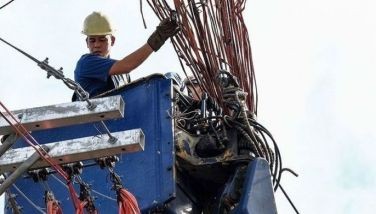NTC eyes reallocation of wireless broadband frequencies
The National Telecommunications Commission (NTC) plans to further reallocate certain radio frequency band to broadband wireless in a bid to further stimulate the growth of the local wireless broadband sector.
In a draft circular, the NTC noted that Republic Act 7925 or the Public Telecommunications Policy Act provides that radio spectrum allocation and assignment shall be subject to periodic review in the interest of public service and in order to keep pace with the development in the wireless technology with the end in view of ensuring a wider access to the limited radio spectrum and the use of cost effective technology.
The commission pointed out that to facilitate the development of ubiquitous networks, the restrictions on the use of radio spectrum for fixed services should be lifted.
It said that in order to achieve the goal of enabling universal, sustainable, ubiquitous and affordable access to information and communications technology (ICT) by all, and foster, maintain and enhance competition in the mobile telecommunications market and bring the benefits of efficient wireless technology to the general public, the frequency band 1710-1720/1805-1815MHz shall be reallocated to broadband wireless access for fixed, nomadic and mobile networks.
The broadband wireless access (BWA) technology has seen a phenomenal growth in the past year. Unfortunately, there is very limited frequency available so that to accommodate the increasing demand for bandwidth, the NTC had to transfer certain bandwidth for BWA use.
The country’s broadband growth has been driven mostly by the cellular base, with the likes of Smart Communications, Globe Telecom, and Sun Cellular among those that have sought wireless broadband frequencies from the NTC.
According to Nokia Siemens Networks, the country has some 600,000 fixed broadband subscribers, while Internet user density is pegged at 10 percent of the population. The annual fixed broadband growth rate is also pegged at 10 percent.
While the company’s study did not predict a percentage for wireless broadband growth, its average growth forecast for 3G usage is 10 percent until 2009. This 10-percent growth is a conservative estimate considering the number of cellular phone users in the country who present a potential market for wireless broadband.
The study also indicated that the Philippines’ broadband base will reach 25 million in 2011, the bulk of which will be wireless connections. It also noted a direct relationship between mobile and broadband penetration to a country’s gross domestic product (GDP), the primary economic yardstick used globally.
It said that for most developing countries, an increase of 10 percent in the mobile penetration rate almost always means an increase of 0.6 percent in the GDP.
When it comes to broadband penetration, the spike is even higher, as a 10-percent increase
translates to a 1.25-percent GDP increase, the study added.
And amidst lackluster demand for mobile phone services, broadband is fast rising as the next battleground for telecommunications companies.
- Latest
- Trending





























